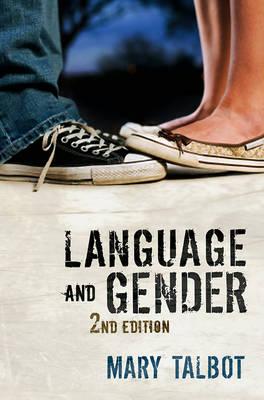Overview
This new edition of Language and Gender has been thoroughly revised and updated, including the addition of entirely new chapters that explore recent work in the field. A range of approaches is covered at an introductory level, presenting sometimes difficult and complex issues in an understandable way. Every chapter concludes with a list of recommended readings so that each topic can be taken further. Like the first edition, it will be popular with students for its accessibility and with teachers for the range and depth it achieves in a single volume. As in the first edition, the book is organised into three parts. An introductory section provides preliminary grounding in early ?classic' studies in the field. In the second section, Talbot examines the language used by women and men in a variety of speech situation and genres. She addresses a range of issues and problems, including the difficulties arising from accounting for gender differences in terms of dichotomies like public vs private and informational vs affective and, not least, the trouble with looking for ?differences' at all. Talbot's emphasis, however, is on recent research. The last and largest section examines not gender difference but the construction and performance of gender in discourse. It includes new chapters outlining recent research on women's talk in public contexts and on language, gender and sexualities. The section as a whole reflects both the high degree of interest in mass media and popular culture found in recent language and gender research and the preoccupation with discourse and social change that is central to Critical Discourse Analysis. The second edition of Language and Gender will become a key textbook for undergraduates and postgraduates in linguistics, sociolinguistics, cultural and media studies, gender studies and communication studies. The book is usable by students for whom it their first, or only, contact with sociolinguistics.
Full Product Details
Author: Mary Talbot (Reader in Language and Culture, University of Sunderland)
Publisher: John Wiley and Sons Ltd
Imprint: Polity Press
Edition: 2nd edition
Dimensions:
Width: 15.20cm
, Height: 2.20cm
, Length: 22.90cm
Weight: 0.431kg
ISBN: 9780745646053
ISBN 10: 0745646050
Pages: 272
Publication Date: 09 April 2010
Audience:
College/higher education
,
Postgraduate, Research & Scholarly
,
Postgraduate, Research & Scholarly
Replaced By: 9781509530106
Format: Paperback
Publisher's Status: Out of Print
Availability: In Print

Limited stock is available. It will be ordered for you and shipped pending supplier's limited stock.
Reviews
The author moves smoothly and coherently from more traditional approaches to language and gender through to very recent research in areas such as discourse and consumerism, and language, gender and sexuality. Different approaches, including Critical Discourse Analysis and social constructionism, are demonstrated, and difficult concepts are clearly and comprehensibly presented. Mary Talbot's own research enriches and enlivens the discussion throughout. The text is extensively illustrated with interesting examples, many of which are taken from recent published research, thus introducing students to relevant and authentic material. Janet Holmes, Victoria University of Wellington
Author Information
Mary Talbot is Secretary of the International Gender and Language Association




